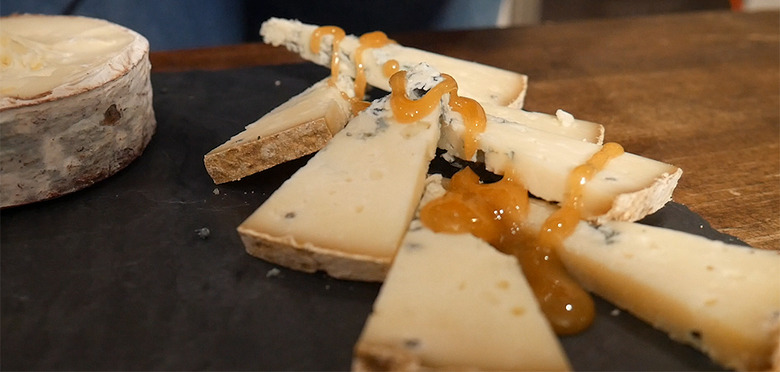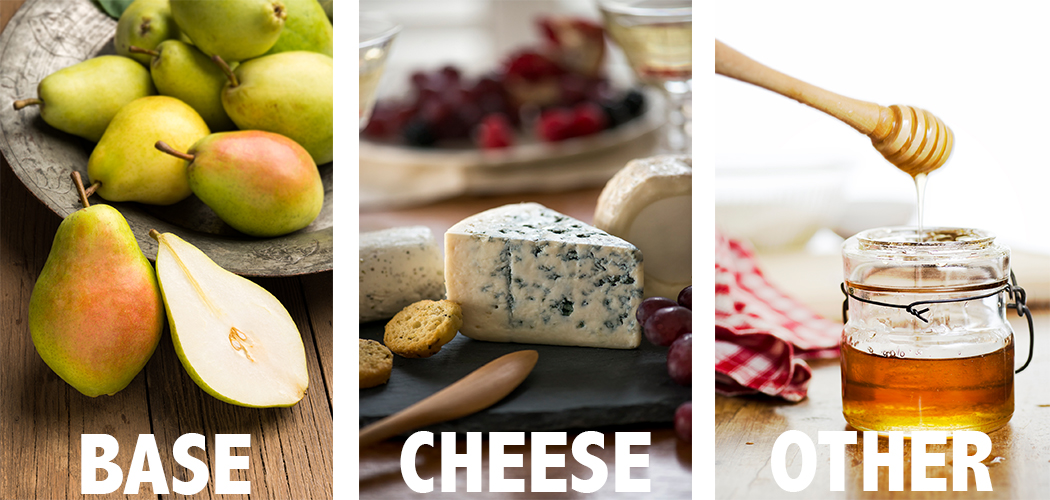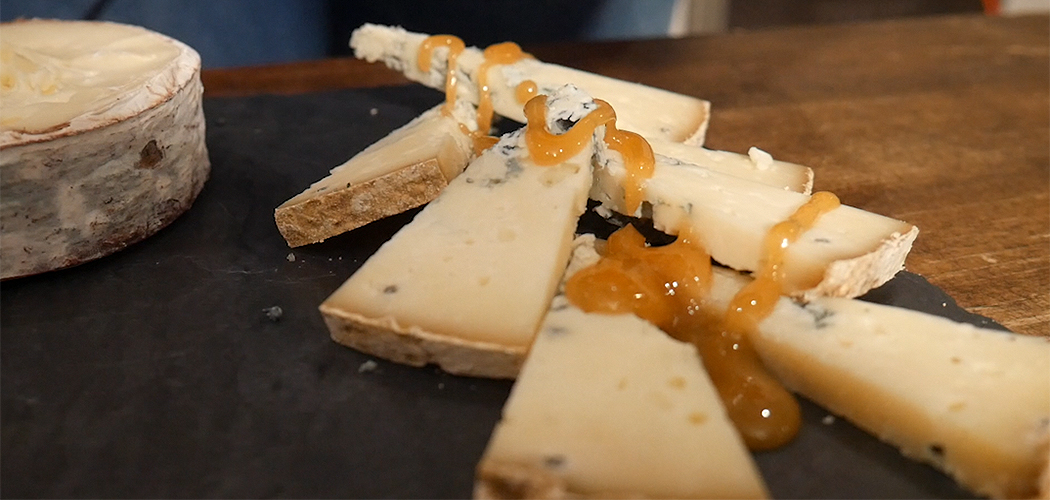How To Build A Cheese Board
A beautifully plated cheese board is basically Instagram bait. The patterns, colors, and textures really pop. But how to lay out a spread that people will want to actually eat?
For tips, we went to the experts at Murray's Cheese in Manhattan's West Village. The cheese shop has been serving New Yorkers since 1940 and has expanded its reach through a partnership with Kroger. The cheesemongers at the 412 Kroger locations across the country are now trained with the same rigor as those working on Bleecker Street. Plus, the experts at each store often find local cheeses to feature.
Adam Goddu, manager of education for Murray's Cheese, recommends starting with the very basics when it comes to creating the perfect cheese bite:
Base + Cheese + Other
This basic formula opens up a world of possibilities. Replace the traditional cracker with a square of high-cocoa chocolate for a blue cheese that gets drizzled with honey. Try a soft Harbison cheese — nearly instant fondue — on a charcoal cracker and topped with a savory tomato jam. Pair pickled Brussels sprouts with a funky washed-rind cheese.
Not sure whether to serve the cheese with its rind? "In the U.S., all rinds are edible — but not all are palatable," Goddu explains.
When choosing cheeses and drizzles for a crowd, aim for five cheeses and two drizzles, Goddu says. "Diversity is important," he says. "Look for different milk types, textures, and colors." This applies to the bases, the cheeses, and the rest. A fried and salted marcona almond adds a crunch to the plate. Put a familiar cheddar on the board, but also try a more unfamiliar cheese like one made with water buffalo milk.
Put the cheese out approximately an hour before guests arrive, and as the board is constructed, place those "others" between its cheese pairings. The honey or chutneys between your chosen cheeses shortly before the gathering starts. For example, both blue cheese and goat's cheese pair well with honey, so place those on either side of that topping. (Be aware: As honey warms, it spreads.)
"For beauty, you can't beat a smear of the spread," Goddu suggests. "But for functionality, serve it in a bowl with a spoon."
If by some miracle cheese remains on the board after your event, store the leftovers wrapped in wax, parchment, or perforated paper. The ammonia emitted by the cheese can build up in Ziploc or glass storage containers and give the remnants an unpleasant taste.
Although a professional cheesemonger is your best resource when choosing pairings, your local grocery store can be just as bountiful. Goddu advised, "Pick firmer cheeses like cheddar or Gruyère, but if you go with a soft cheese, make sure the expiration day is seven days out — minimum."
In the end, though, the cheese board is all about what you and your guests like and will eat. ("Always get Comté," Goddu says. "Goes with most things and is delicious.") Whether you go to a grocery store or a cheesemonger, there are plenty of options for any palate and plenty to learn about cheese.


